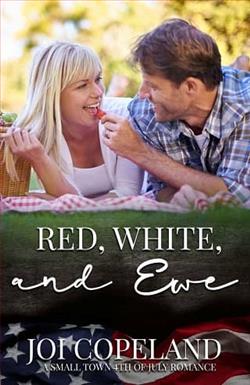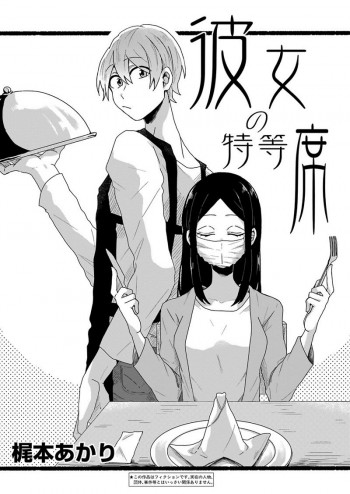In Joi Copeland's charming novel Red, White, and Ewe, readers are transported to the picturesque town of Winter Springs, where the warmth of community and the complexities of past relationships intertwine against the backdrop of a sheep race and a 4th of July celebration. This contemporary romance is not just a tale of rekindled love; it delves into themes of forgiveness, personal growth, and the importance of second chances.
The story revolves around Kaleb Linden, a hardworking farmer who finds himself in a precarious situation when his cook has to leave town unexpectedly. With the sheep races approaching and a full house of guests at Linden Farms, Kaleb is desperate for help. His only option is Cinnamon Jordan, a talented chef who has moved on from their tumultuous past. The tension between Kaleb and Cinnamon is palpable from the outset, as the author skillfully crafts their history into the narrative, allowing readers to feel the weight of their shared experiences.
Kaleb is portrayed as a dedicated and responsible individual, deeply committed to his family and the farm. However, his past mistakes, particularly those that affected Cinnamon, haunt him. Copeland does an excellent job of illustrating Kaleb's internal struggle; he is torn between his need for assistance and the guilt he carries for the hurt he caused Cinnamon over a decade ago. This conflict adds depth to his character, making him relatable and human. Readers can empathize with his desire to make amends, even as he grapples with the fear that Cinnamon may never forgive him.
Cinnamon, on the other hand, is a strong and independent woman who has built a successful career as the head chef at Kris Kringle Inn. Her character is a testament to resilience and the power of self-discovery. Copeland paints her as someone who has worked hard to create a life she loves, free from the shadows of her past. However, her encounter with Kaleb forces her to confront unresolved feelings and the pain that still lingers. The author captures Cinnamon's internal conflict beautifully; she is torn between her logical mind, which urges her to stay away from Kaleb, and her emotional heart, which yearns for connection and closure.
The theme of forgiveness is central to the narrative. As Kaleb and Cinnamon navigate their complicated relationship, readers witness the gradual process of healing. Copeland emphasizes that forgiveness is not merely about absolving someone of their past actions but also about allowing oneself to move forward. This theme resonates deeply, as it reflects the real-life struggles many face when dealing with past traumas and relationships. The author’s exploration of this theme is both poignant and realistic, making it a significant aspect of the story.
Another notable theme is the importance of community and support. Winter Springs is depicted as a close-knit town where everyone knows each other, and the sense of belonging is palpable. The sheep races serve as a community event that brings people together, highlighting the joy of shared experiences. Copeland effectively uses this setting to showcase how relationships—both romantic and platonic—can flourish in an environment of support and understanding. The interactions between the townsfolk add a layer of warmth and charm to the story, making it feel like a cozy escape for readers.
Character development is a strong suit in Red, White, and Ewe. Both Kaleb and Cinnamon undergo significant growth throughout the novel. Kaleb learns to confront his past and take responsibility for his actions, while Cinnamon discovers the strength to face her emotions and the possibility of reconciliation. Their journey is not without challenges, but Copeland ensures that their growth feels authentic and earned. The chemistry between the two characters is palpable, and their interactions are filled with tension, humor, and vulnerability, making their eventual reconciliation all the more satisfying.
Copeland's writing style is engaging and accessible, with a balance of humor and heartfelt moments. The dialogue flows naturally, and the descriptions of the farm and the town create a vivid sense of place. Readers can almost feel the summer heat and hear the excitement of the sheep races. The pacing of the story is well-executed, with a perfect blend of tension and resolution that keeps readers invested in the outcome.
In comparison to other contemporary romances, Red, White, and Ewe stands out for its focus on personal growth and the complexities of forgiveness. While many romance novels may lean heavily on the romantic aspect, Copeland skillfully intertwines emotional depth with the love story, making it a more enriching read. Fans of authors like Susan Mallery and Kristan Higgins will likely find joy in Copeland's storytelling, as she captures the essence of small-town life and the intricacies of human relationships.
Overall, Joi Copeland's Red, White, and Ewe is a delightful read that offers a perfect blend of romance, humor, and emotional depth. The characters are relatable, the themes are resonant, and the setting is enchanting. This novel is not just about finding love; it’s about healing, forgiveness, and the beauty of second chances. Whether you’re a fan of contemporary romance or simply looking for a heartwarming story, this book is sure to leave a lasting impression.
























Reviews 0
Post a Reviews: